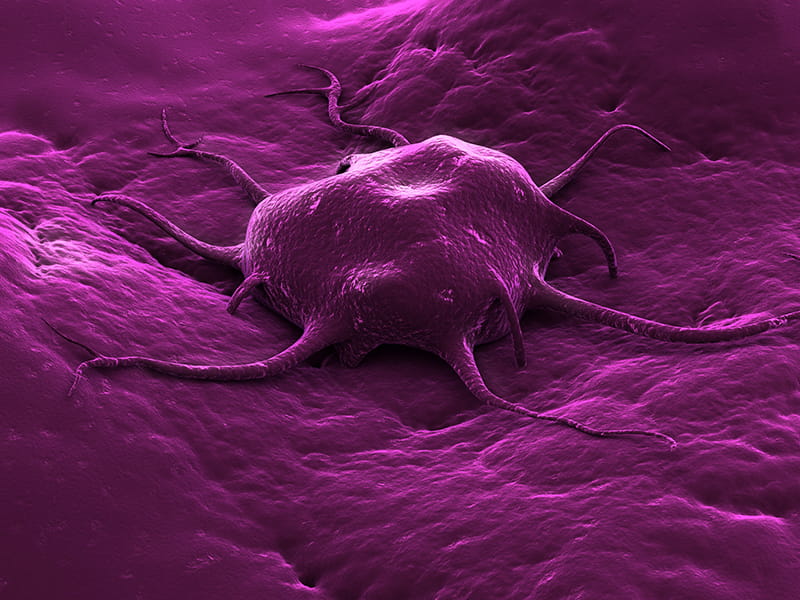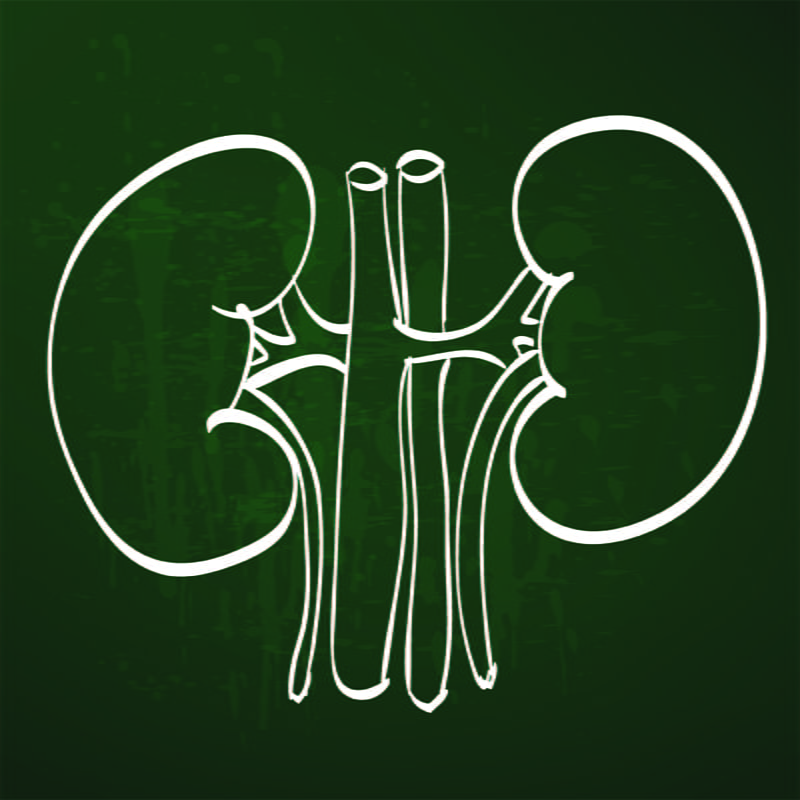Nivolumab (NIVO) plus Ipilimumab (IPI) vs Chemotherapy (Chemo) or NIVO Monotherapy for Microsatellite Instability-high/mismatch Repair-deficient (MSI-H/dMMR) Metastatic Colorectal Cancer (mCRC): Expanded Analyses from CheckMate 8HW
Speaker: Dr.Heinz-Josef Lenz
Introduction
Dr. Lenz presented the expanded analysis of phase 3 CheckMate 8HW, demonstrating the long-term efficacy and safety of nivolumab (NIVO) plus ipilimumab (IPI) compared to chemotherapy (chemo) or NIVO monotherapy in patients with microsatellite instability-high/mismatch repair-deficient (MSI-H/dMMR) metastatic colorectal cancer (mCRC).
Methods
- Patients with histologically confirmed MSI-H/dMMR mCRC were randomized globally to receive either NIVO+IPI, NIVO monotherapy, or chemotherapy.
- The dual primary endpoints included progression-free survival of NIVO + IPI versus chemotherapy and progression-free survival of NIVO + IPI versus NIVO, both evaluated in centrally confirmed dMMR populations.
- The follow-up data was up to August 28, 2024 (median: 47 months).
Results
- NIVO+ IPI continued to show sustained improvements in PFS compared to chemotherapy (54.1 vs. 5.9 mo; HR: 0.21). 16% of NIVO+IPI patients needed subsequent therapy compared to 73% of chemotherapy patients.
- A 43% reduction in mortality or progression was observed with NIVO + IPI versus nivolumab (HR: 0.62) in PFS2, with a 3-year PFS rate of 83% and 66%, respectively.
- Higher RR(71% vs. 58%) were achieved with NIVO+ IPI.
- Grade 3-4 treatment-related adverse events were more frequent in NIVO+IPI (22%) compared to NIVO (14%), with most occurring in the first 6 months. No new safety signals were observed.
Conclusion
The expanded analyses from the CheckMate 8HW study reinforced that NIVO+ IPI offers sustained and significant clinical advantages for patients with centrally confirmed MSI-H/dMMR metastatic colorectal cancer. The combination has shown superior outcomes compared to chemotherapy and nivolumab.
Long-term Safety and Efficacy of Sotorasib plus Panitumumab and FOLFIRI for Previously Treated KRAS G12C-mutated Metastatic Colorectal Cancer (mCRC): CodeBreaK 101 (phase 1b)
Speaker: Dr. John H. Strickler
Introduction
The speaker, Dr. John, reported the long-term safety and efficacy results from CodeBreaK 101 investigating sotorasib (KRASG12C inhibitor) plus panitumumab (monoclonal anti-EGFR antibody) and FOLFIRI in previously treated KRAS G12C-mutated metastatic colorectal cancer. The median followed up period was 32 months.
Methods
- This international, multicenter, open-label study involved 46 patients: 6 patients in the dose-escalation phase and 40 patients in a dose-expansion cohort.
- The patients had KRAS G12C-mutated metastatic colorectal cancer and had received at least one prior systemic treatment.
- Sotorasib (960 mg orally daily) was administered along with standard doses of panitumumab (6 mg/kg intravenous every 2 weeks) and FOLFIRI (administered intravenous every 2 weeks).
- The primary endpoint was safety and tolerability, while the secondary endpoints included RR, DoR, PFS, & OS. Results
- An ORR of 57.5% was reported, with all responses being partial. The mDoR was 6.6 mo.
- mOS was 15.6 mo, while mPFS was 8.2 mo.
- Patients with only one prior line of therapy had a higher response rate (69%) and longer mOS of 22 mo.
- The efficacy was maintained even in patients previously treated with irinotecan. The safety profile was favourable, with most treatment-related adverse events being low-grade and manageable (Neutropenia, diarrhoea). No new toxicities were observed.
Conclusion
The combination of sotorasib, panitumumab, and FOLFIRI showed sustained efficacy and manageable safety in pretreated KRAS G12C-mutated metastatic colorectal cancer.
Upfront Modified FOLFOXIRI plus Panitumumab (pan) versus FOLFOX/pan for Unresectable RAS and BRAF Wild-type (wt) Metastatic Colorectal Cancer (mCRC) Patients: Overall Survival (OS) Results from the Phase III TRIPLETE Study by GONO
Speaker: Dr. Veronica Conca
Introduction
An overall survival (OS) analysis from the phase 3 TRIPLETE study was presented by Dr. Conca, which compared the upfront modified FOLFOXIRI plus pan to FOLFOX plus pan for unresectable RAS/BRAF wild-type mCRC. The trial led by the GONO group, previously reported no benefit in response rate or progression-free survival (PFS) with this regimen.
Methods
- Across 57 Italian centres, 435 patients were enrolled, stratified by ECOG performance (majority 0-1 vs. 2), primary tumor location (right vs. left), and metastatic spread (liver-only vs non-liver-only).
- Patients with unresectable RAS/BRAF wild-type (WT) mCRC and ECOG performance 0-1 were randomized to receive
- Arm A: FOLFOXIRI + pan
- Arm B: FOLFOX + pan
- Both groups received up to 12 cycles of induction therapy, followed by maintenance with 5-fluorouracil (5-FU) and pan until disease progression.
Results
- After a median follow-up of 60.2 mo, the median OS was 41.1 vs 33.3 mo in Arm A and Arm B, respectively (HR: 0.79, p = 0.049).
- The PFS and objective response rates (ORR) remained comparable between both arms (12.4/12.7 mo), but a longer post-progression survival was observed in Arm B (HR: 0.73, p = 0.012).
- No particular clinical or molecular subgroup was identified as deriving greater benefit in subgroup analyses.
- Subsequent therapy was similar between both arms, with anti-EGFRs and oxaliplatin. Anti-angiogenics and irinotecan were more frequently used in the FOLFOXIRI + pan arms.
Conclusion
The OS benefits showed a modest but significant OS benefit, despite the absence of differences in PFS or response rates with upfront modified FOLFOXIRI plus panitumumab unresectable RAS/BRAFWT mCRC. These findings support the reconsideration of this regimen in select patients.
FIRE-4 (AIO KRK-0114): Randomized Study Evaluating the Efficacy of Cetuximab Re-challenge in Patients with Metastatic RAS Wild-type Colorectal Cancer Responding to First-line Treatment with FOLFIRI plus Cetuximab.
Speaker: Dr. Lena Weiss
Introduction
The FIRE-4, a randomized phase III control trial, was conducted to investigate whether rechallenge with cetuximab could be effective in patients with metastatic RAS wild-type colorectal cancer (mCRC) who previously responded to first-line (1L) anti-EGFR therapy with FOLFIRI plus cetuximab in prolonging overall survival (OS).
Methods
The FIRE-4 study was randomized as a two-part trial:
- Part 1 (Induction Phase): Treatment-naïve RAS wild-type mCRC received FOLFIRI plus cetuximab till disease progression (PD) or toxicity (arm A) or switched to using 5-FU + bevacizumab (arm B). After the PD anti-EGFR-free regimen was administered.
- Part 2 (Re-challenge Phase): Patients with confirmed RAS wild-type status at second progression, and who showed clinical benefit from the first-line anti-EGFR therapy, were randomized to:
- Cetuximab rechallenge
- Investigator’s choice treatment (excluding EGFR inhibitors)
- The primary endpoint was OS after 2nd The study was statistically designed to detect a 33% reduction in mortality (HR 0.67) in 196 patients, with 80% power and a two-tailed alpha error of 5%.
- Due to futility observed during the analysis, the trial was stopped in June 2023.
Patient Characteristic
- A total of 672 patients were screened, of which 66 patients were enrolled from FIRE-4 Part 1 and 27 from outside the study (n = 93). Both arms had similar features in terms of age, sex, and performance status.
- In the cetuximab re-challenge arm, 91% of patients received combination therapy with FOLFIRI, while in the investigator’s choice arm, 24% received newer agents (TAS-102 or regorafenib) and 76% received doublet chemotherapy.
Results
- Objective response rate: 26.7% in cetuximab arms vs. 11.9% in investigator’s choice
- Disease control rate: 60% in both arms
- Progression-free survival: HR= 0.87, comparable between both arms
- OS: 17.6 mo vs. 15.1 mo (HR = 0.86, p = 0.54; non-significant)
Conclusion
A longer OS was observed in the cetuximab re-challenge group; however, the primary endpoint of statistically significant OS improvement was not met. The investigator arm also showed favorable results, suggesting RAS wild-type patients could achieve good outcomes without rechallenge. Cetuximab rechallenge may be considered as a viable third-line or later option in patients with prior benefit from EGFR-targeted treatment.
Panitumumab Re-treatment Followed by Regorafenib vs the Reverse Sequence in Chemo-refractory Metastatic Colorectal Cancer (mCRC) Patients with RAS and BRAF Wild-type Circulating Tumor DNA (ctDNA): Results of the Phase II Randomized PARERE Trial by GONO
Speaker: Dr. Chiara Cremolini
Introduction
The hypothesis behind anti-EGFR retreatment in chemo-refractory mCRC is that acquired resistance alterations, which drive disease progression during first-line anti-EGFR therapy, may decay during an intervening anti-EGFR-free treatment period. This could restore sensitivity to anti-EGFR agents.
PARERE trial aimed to investigate the optimal sequence of panitumumab retreatment vs regorafenib in a population where previous anti-EGFR exposure and the potential for re-sensitization were key.
Study Design
The PARERE trial was a phase II, randomized, open-label, multi-center academic study.
Patient Eligibility
- Patients who previously benefited from a 1L anti-EGFR-containing treatment (at least partial response or disease stabilization lasting ≥ 6 months).
- Received at least one intervening line of anti-EGFR-free regimen.
- At least 4 mo had elapsed between the last anti-EGFR administration and screening.
- Crucially, patients had no RAS or BRAF V600E mutations detected in their circulating tumor DNA (ctDNA) at screening. This ctDNA testing was the basis for prospective patient selection.
Randomization: Eligible patients were randomized to receive:
- Arm A: Panitumumab retreatment followed by regorafenib upon progression.
- Arm B: Regorafenib followed by panitumumab retreatment upon progression.
Endpoints
- Primary Endpoint: Overall survival (OS) [data not yet mature].
- Secondary Endpoints:
- Objective Response Rate (ORR)
- Disease Control Rate (DCR)
- Progression-Free Survival (PFS)
- First PFS (PFS1): Measured from randomization until first disease progression.
- Second PFS (PFS2): Measured from the beginning of treatment after first progression until second disease progression.
Both assessed in intention-to-treat and per-protocol populations.
Study Population
- From December 2020 to December 2024, 428 patients underwent molecular screening.
- 213 patients were randomized across 37 Italian centers.
- RAS or BRAF V600E mutations were found in approximately 38% of evaluable cases, thus excluding them from randomization.
- Baseline characteristics were balanced between the two arms.
- Most patients:
- Had left-sided primary tumors.
- Approximately 65% had received two prior lines of therapy, and 35% more than two.
- The vast majority had more than one site of metastatic disease.
Key Results
First Part of Treatment
- Panitumumab retreatment showed numerically longer PFS compared to regorafenib in the first segment of treatment (PFS1, p-value of stratified log-rank test = 0.116).
- Panitumumab was associated with significantly higher:
- ORR: 16% (vs. 0% for regorafenib).
- DCR: 59.4% (vs. 31.8% for regorafenib).
Second Part of Treatment
- Cross-over rates were high:
- 71% of patients initially treated with panitumumab were able to receive regorafenib.
- 64% of patients initially treated with regorafenib were able to receive panitumumab retreatment.
- In the second treatment segment, panitumumab was again associated with longer progression-free survival (3.7 mo vs. 2.7 mo for regorafenib, p-value of stratified log-rank test = 0.068).
- Panitumumab also showed a higher ORR (17.4%) and DCR compared to regorafenib.
Per-Protocol Population Analysis
Looking at the per-protocol population (patients who received at least one cycle of both study treatments, representing 64% of randomized patients):
- Panitumumab was associated with significantly longer PFS than regorafenib.
- Higher ORR and DCR were observed with panitumumab compared to the multi-tyrosine kinase inhibitor (regorafenib).
Conclusion
The PARERE trial provides strong evidence supporting the utility of ctDNA-guided patient selection for anti-EGFR retreatment. The prospective use of liquid biopsy enabled the identification of a significant portion of patients (over one-third) who might otherwise have been considered ineligible for anti-EGFR re-challenge due to suspected acquired resistance. While overall survival data are still maturing, these findings suggest that ctDNA-guided retreatment with panitumumab can be considered an effective therapeutic option for selected chemo-refractory mCRC patients with RAS and BRAF wild-type ctDNA.
Short-course Radiotherapy (SCRT) Followed by Sintilimab and CAPOX as Total Neo-adjuvant Treatment in Locally Advanced Rectal Cancer (LARC): A Prospective, Randomized Controlled Trial (SPRING-01)
Speaker: Dr. Changqing Jing
Introduction
While immunotherapy with PD-1 blockade therapy has shown remarkable efficacy in MMR-deficient rectal cancer, this accounts for only about 5% of patients. The vast majority (95%) of LARC patients have proficient mismatch repair (pMMR). The SPRING-01 study explored whether combining radiotherapy and immunotherapy, known for their synergistic effects, could benefit pMMR LARC patients. The trial aimed to compare the efficacy and safety of SCRT followed by six cycles of CAPOX chemotherapy with or without immunotherapy (sintilimab) as TNT.
Study Design
- SPRING-01 is a single-center, open-label, randomized phase 2 trial that enrolled 98 patients between October 2021 and September 2023. Patients were randomized into two arms:
- Experimental Arm: SCRT (5x5 Gy over 5 days) followed by sintilimab plus CAPOX for six cycles.
- Control Arm: SCRT (5x5 Gy over 5 days) followed by CAPOX alone for six cycles.
- Two weeks after completing chemotherapy, patients underwent re-evaluation (DRE, MRI, endoscopy) to assess response. A watch-and-wait approach or surgery was then considered based on the response.
- Primary Outcome: Pathologic Complete Response (pCR) rate.
- Secondary Outcomes: Clinical Complete Response (cCR), Near Pathologic Response (NPR), R0 resection rate, and adverse events (TRAEs).
Patient Compliance and Characteristics
- In the sintilimab plus CAPOX arm, 40 of 49 patients completed all six cycles of treatment, and 45 underwent surgery.
- In the CAPOX-only arm, 41 of 49 patients completed all six cycles, and 44 underwent surgery.
- Both groups showed good treatment compliance, and baseline patient characteristics were well-balanced.
- Most patients had Stage III disease at the start of treatment.
Results
Efficacy
- The addition of sintilimab significantly improved key response metrics:
- pCR:
- 2% in the sintilimab + CAPOX arm.
- 7% in the CAPOX-only arm.
- cCR:
- 2% in the sintilimab + CAPOX arm.
- 7% in the CAPOX-only arm.
- NPR and R0 resection rates were also significantly improved with the addition of sintilimab.
- pCR:
- These results indicate that sintilimab plays a crucial role in significantly increasing the response rates.
Safety
- The R0 resection rate did not differ significantly between the groups.
- The most common post-operative complication was a high-priority area (details not specified further).
- No grade 5 (mortality) or 60-day mortality was reported in either arm.
Treatment-Related Adverse Events (TRAEs)
- Overall TRAE rates were 92% in the sintilimab + CAPOX arm and 90% in the CAPOX-only arm.
- Grade 3/4 TRAEs:
- 33% in the sintilimab + CAPOX arm.
- 35% in the CAPOX-only arm.
- The most common Grade 3/4 TRAE was thrombocytopenia, indicating that the addition of sintilimab generally did not lead to a substantial increase in high-grade chemotherapy-related toxicities beyond what was already present.
Immune-Related Adverse Events (irAEs)
- Immune-related serious adverse events were reported in 20% (10/49) of patients in the sintilimab + CAPOX arm, with myocarditis being the most frequent (details on grade not specified but typically serious irAEs are high grade).
- The most common irAEs were dermatitis and kidney injury.
- Grade ≥3 irAEs occurred in 12% (6/49) of patients.
- One patient developed serum immune-related pneumonitis, which remained stable without metastases or progression.
Conclusion
The SPRING-01 trial demonstrates that SCRT combined with sintilimab and CAPOX as total neoadjuvant treatment significantly increases the pCR rate in LARC patients. The regimen exhibits a manageable safety profile, although irAE’s , including serious ones, were observed. These promising early results suggest this combination could be a valuable treatment approach for LARC, particularly in the pMMR population where immunotherapy has historically had limited direct benefit.
Proposed Changes to the Pathologic Staging for Colon Cancer (CC): AJCC Colon Cancer Expert Panel (AJCCCCEP)
Speaker: Dr. Qian Shi
Dr. Qian Shi from the Department of Quantitative Science Research at Mayo Clinic Rochester presented significant proposed updates to the AJCC (American Joint Committee on Cancer) Pathologic Staging System for colon cancer (CC). These changes, put forth by the AJCC Colon Cancer Expert Panel, aim to improve prognostic accuracy for M0 disease.
Rationale for Update
The AJCC staging system is a cornerstone for CC classification, guiding treatment decisions, clinical trial design, and patient communication regarding prognosis. However, a critical limitation of the 8th edition is the absence of a consistent survival hierarchy within M0 disease (cancer that has not spread to distant sites). Additionally, the prognostic significance of tumor deposits, which are isolated clusters of tumor cells in the peri-tumoral adipose tissue without evidence of residual lymph node or neural structures, is not fully leveraged beyond the N1c category. The goal of this update is to improve the accuracy of prognostic assessment and better describe patient long-term outcomes.
Methodology
The expert panel employed a robust, multi-tiered approach using recursive partitioning and tree-based regression to model three core variables: T category (tumor invasion depth), positive node count (lymph node involvement), and tumor deposit counts.
This rigorous process included:
- Training: Over 140,000 M0 CC cases from the National Cancer Database (NCDB) were used to develop the new system. Strict criteria were applied, demanding clearly separated hierarchical survival curves and stringent statistical significance for every consecutive pairwise comparison between proposed stages.
- Internal Validation: The model was validated within a different subset of the same NCDB registry.
- External Validation: The proposed system was further tested against a diverse set of real-world and clinical trial cohorts from multiple international centers, applying relaxed statistical thresholds to account for heterogeneity in external populations. This ensured the updated staging system is both statistically sound and broadly applicable.
Cohorts and Data Consistency
The study utilized five distinct M0 colon cancer cohorts for training, internal validation, and external validation. While there was overall consistency, key variations were observed, particularly in the distribution of T category, nodal involvement, and the number of tumor deposits. Notably, clinical trial cohorts had a higher proportion of node-positive patients compared to other populations, highlighting the importance of broad validation.
Proposed Pathologic Staging System
The new proposed system for M0 colon cancer emphasizes that the T category is a dominant prognostic factor, with refined interactions between T and N (nodal) categories. Crucially, tumor deposits systematically upgrade the stage across both T and N dimensions, providing a more granular and accurate risk stratification.
Validation Results
The proposed staging system demonstrated strong prognostic discrimination across all validation cohorts:
- NCDB Training Cohort: Overall survival curves showed clear hierarchical separation, with survival progressively decreasing from Stage I to Stage IIIc. All consecutive comparisons were highly statistically significant, confirming strong prognostic discrimination and a clinically meaningful hierarchical order.
- Internal Validation (NCDB): The updated stages maintained clear hierarchical separation of survival curves with highly significant differences in all consecutive pairwise comparisons.
- External Validation (International Clinical Trials & Real-World Databases): In four international clinical trials and real-world datasets (including the Northland Cancer Registry and a Japanese multi-center cohort), the updated system showed consistent hierarchical survival patterns despite geographic and clinical practice differences. Over 80% of consecutive pairwise comparisons met the statistical threshold for validation, reinforcing the global relevance and utility of the proposed system.
Conclusion
The updated AJCC pathologic staging system for M0 colon cancer represents a significant advancement. It addresses the limitations of the 8th edition by:
- Improving prognostic precision and resolving survival inconsistencies.
- Being developed with data from over 200,000 patients treated with standard of care.
- Being validated across diverse clinical trial and population-based cohorts from multiple countries, establishing robust Level 1 evidence.
- Preserving the current treatment decision framework while offering more accurate risk stratification and individualized patient counselling.
- Setting the stage for future integration of molecular biomarkers like circulating tumor DNA (ctDNA) into staging.
ASCO, May 30 – June 3 2025, Chicago




